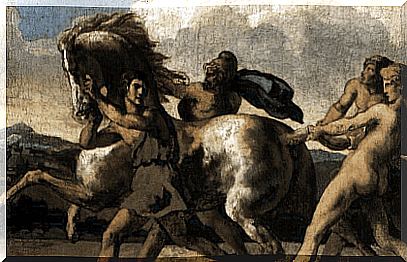Théodore Géricault, The Artist Of A Shipwreck

Frail, brooding and sensitive, Géricault was a painter who had a strong influence on the Romantic movement in France. He began his career with major military declarations for the Emperor Napoleon.
Yet it is his later works, with their emotional brutality and empathy, that have captivated audiences’ hearts for generations. His masterpiece The Raft of the Medusa became iconic from its creation.
Sadly, Géricault’s death at a young age did not let us know how deep he could dig into the human mind. But the work he left for humanity was very important for romanticism.

His early years
Théodore Géricault, or Jean-Louis-André-Théodore Géricault was born into a bourgeois family on September 26, 1791, in Rouen, France. His parents encouraged Géricault’s artistic inclinations from an early age.
In 1808, he began his apprenticeship with Carle Vernet, a neoclassical painter who shared the young man’s fascination with horses. Géricault is interested in a style of painting less rigorous and artificial than that of neoclassical works . At that time, the teaching method focused on imitating masterpieces.
Gericault begins to work in Pierre-Narcisse Guérin’s studio, where he meets another brilliant young Frenchman, Eugène Delacroix. The two forged a lasting friendship made of mutual admiration and founded the art movement known as Romanticism.
The beginnings of his career
Géricault became involved in politics with his work Le Radeau de la Méduse, published in 1818 and considered his romantic masterpiece. This painting represents a tragic event in French history: the sinking of the French ship Medusa in the year 1816. The sinking had enormous political implications in France.
The incompetent captain had gained his position through connections with the Bourbon Restoration government. At the time of the sinking, he fought to save his life and that of other base officers, but left the weak to their fate.
The sinking is the result of the negligence and selfishness of the officers on board. Géricault’s painting then represented a declaration of hostility. The macabre realism of the work, its treatment of the incident as an epic-heroic tragedy and the virtuosity of the drawing led the work far beyond the mere reporting of the incident.
The portrait of the dead and dying has been carefully and dramatically developed. Thus, The Raft of the Medusa tackles a theme of the time with remarkable and unprecedented passion.
Thanks to this piece, the artist polarizes criticism and stands out as a young face on the pictorial scene. With this painting and other lithographs, Géricault traveled through England from 1820 to 1822, gaining notoriety and fortune.

Years later, Géricault painted madness
Upon his return to France, the artist produced a well-received series of ten paintings depicting different types of madness. He went to the Salpêtrière asylum in Paris and painted portraits of detainees with poignant precision.
The series of ten portraits, entitled Monomania , was commissioned by psychiatrist Étienne-Jean Georget. It would seem that Georget, chief doctor of the Salpêtrière, a Parisian asylum, was treating Géricault himself for severe melancholy.
The intention of the doctor is to classify the mentally ill. To do this, he ensures that each portrait in the series is unified in terms of chromaticism, composition and scale. This series was seen as a bridge between Romantic art and 19th century empirical science.
Théodore Gericault then suffered from tuberculosis, but this disease was not responsible for his death. He died after long suffering due to a riding accident. At the time of his death, he was 32 years old and was at the peak of his career. His work will influence other romantic painters and artists for centuries.










